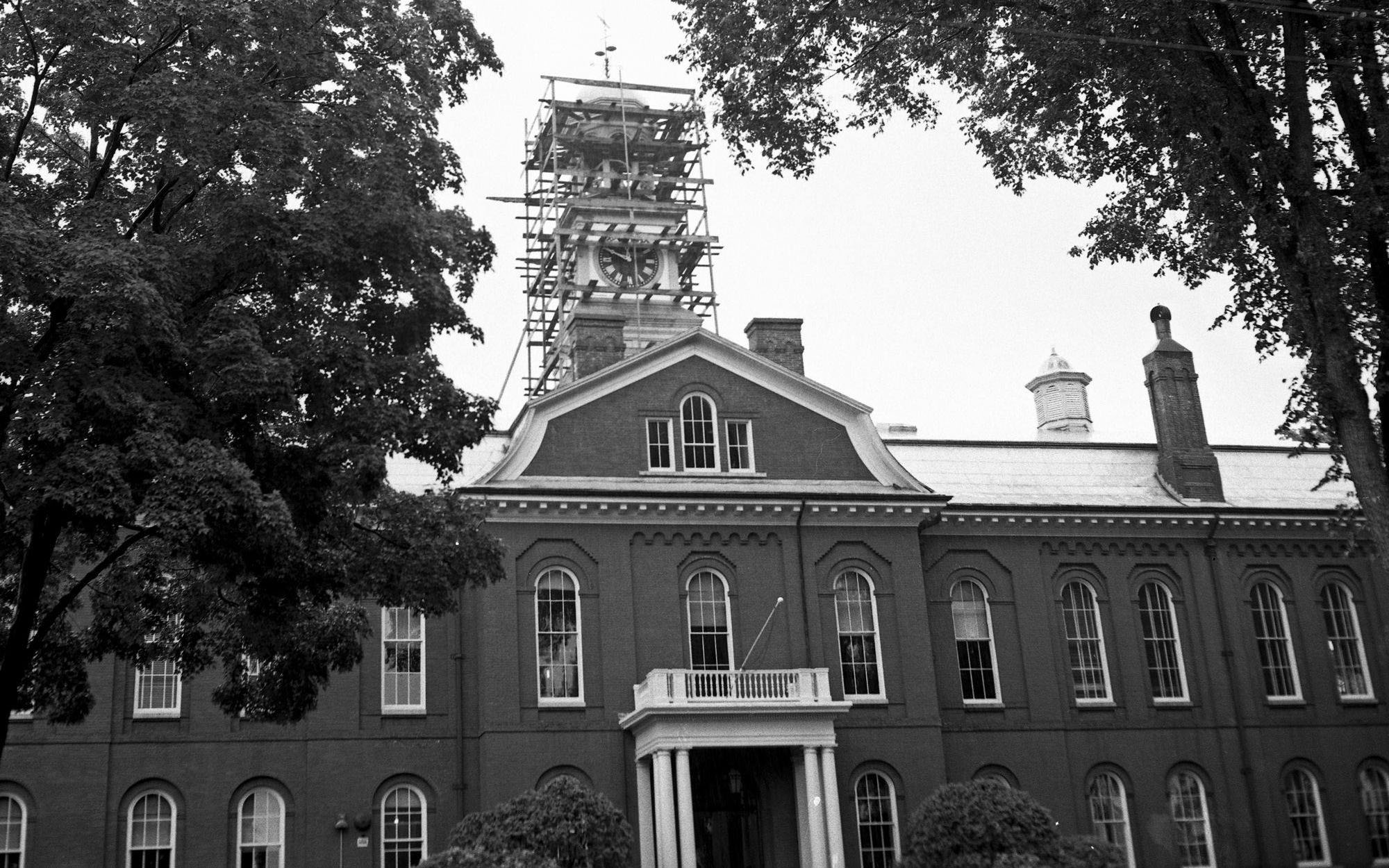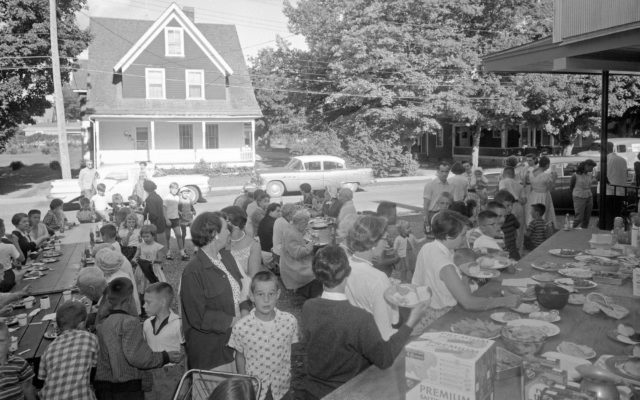
HOULTON, Maine — Since it was founded 211 years ago, Houlton has amassed a significant history.
The town is dotted with historic buildings, statues and monuments, and the Aroostook Historical and Art Museum has amassed a sizable collection of photographs and exhibits detailing the town’s creation and development.
- A celebration is underway at 65 High St. in Houlton in this 1957 photograph. The Aroostook Historical and Art Museum has amassed a sizable collection of pictures sent to them from the Croydon Historical Society in New Hampshire. The organization had a number of photographs that were a part of the estate of Andrew Andrews. Andrews, 87, was a professional photographer who died in New Hampshire in 2014. Andrews used to work for the Houlton Pioneer Times. (The Aroostook Historical and Art Museum)
While it is not unusual for the museum to receive pictures or documents that have been found in someone’s attic, even the longest serving museum caretakers were surprised when a sizable collection of Houlton’s history was passed on to them from a tiny New Hampshire town.
Leigh Cummings, curator of the museum, said Friday that his wife received a call earlier this year from the Croydon Historical Society in New Hampshire. The organization had a number of photographs that were a part of the estate of Andrew Andrews.
Andrews, 87, was a professional photographer who died in New Hampshire in 2014.
A career newspaper man, according to his obituary, he worked for the Houlton Pioneer Times before moving on to the Rochester Courier of Rochester, New Hampshire, the Boston Traveler, Boston Herald Traveler and the Boston Globe.
“The pictures are absolutely wonderful,” said Cummings. “They depict Houlton in the 1950s, an era when the town was really blossoming. World War II was over and business and industries were booming again, Ricker College was up and running and the Bangor and Aroostook Railroad was still here.”
A number of the photos center around the old Aroostook General Hospital and Madigan Memorial Hospital, which merged in 1972 to form Houlton Regional Hospital.
There are several photographs depicting activities at Houlton International Airport, nurses caring for patients at the two hospitals, and former businesses that once existed in the community.
In one, a photograph of Joseph Houlton is unveiled in Madigan Memorial Hospital. In another, construction on the clock tower above the Aroostook County Superior Court building is underway, while others depict the Miss Aroostook Diner and the former St. Mary’s Catholic Church, which was destroyed by fire in 1958.
Cummings said that having the photographs is a huge asset to the museum.
“They gave us more than 150 of them,” he said Friday. “It really is quite a treasure trove.”








